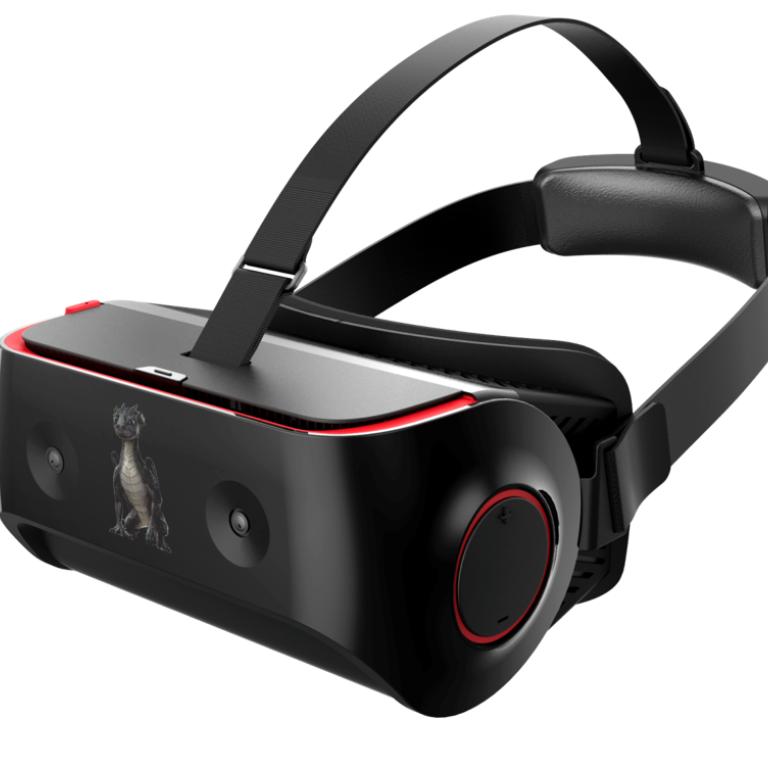
Qualcomm launches VR headset design with eye-tracking tech
But the US company insists it isn't looking to become a device manufacturer or compete with Samsung , HTC or Oculus' VR tech
Qualcomm unveiled a virtual reality (VR) chipset and headset it hopes will make it a player in the fast-growing field and act as a template for manufacturers yet to bring out their own products.
Unveiled Thursday, Snapdragon VR820 is the name of Qualcomm's new platform which consists of a a chipset and a "reference design" for a wireless headset that other companies can use for their own products.
Reference designs are often made by companies like Qualcomm in order to show potential customers the capabilities of the technology and how their chipsets could be used. The wireless VR headset is in contrast to competitors' devices like the Oculus Rift, which requires being plugged into a PC. Qualcomm's headset was developed with Goertek.
"We think we are a true and compelling VR experience. It needs to be untethered, this is why we focused on head-mounted standalone devices," Anthony Murray, senior vice president and general manager of Qualcomm's internet of things (IOT) business, said ahead of the IFA tech conference in Berlin, where the product was unveiled.
Qualcomm is not looking to become a device manufacturer so it does not directly compete with the likes of Samsung , HTC and Facebook -owned Oculus which all have their own VR headsets. Instead, Qualcomm's closest competitor is Intel, which last month unveiled its own wireless VR reference design called "Project Alloy".
Although it is relatively young, the VR market has tremendous growth potential and therefore already has a large number of players. Sales of dedicated VR headsets such as the Oculus Rift and HTC Vive will hit 2 million this year, but increase tenfold to 21 million by 2020, according to CCS Insight. Smartphone VR headsets like the Samsung GearVR will grow from 14.5 million to 72 million in the same time frame.
Qualcomm's reference design as a camera inside to track a user's eye movements. On the outside, another camera can track hands so that the user can interact with the virtual reality images they are seeing. This will also allow the helmet to be used for augmented reality. The company has also integrated the ability for 3D sound to make the VR experience feel more real.
Chipmakers around the world are having to contend with a slowing smartphone and PC market and look to new areas such as cars, 5G internet and virtual reality for future growth.
The Snapdragon VR820 is Qualcomm's first full headset and chipset reference design, but it currently makes the Snapdragon 820 processor for smartphones which it says supports "immersive VR experiences". It also released a VR software development kit (SDK) earlier this year to allow developers to create apps for devices running the Snapdragon 820 processor.
Qualcomm said that it expected the Snapdragon VR820 to be available in the fourth quarter of 2016 with the first commercial devices based on this platform to come out "shortly" after.
Fossil Group also announced that its new smartwatches would have Qualcomm's Snapdragon Wear 2100 processors powering them.
The Snapdragon Wear 2100 was announced earlier this year for smartwatches running Google's Android Wear operating system. The Fossil Q Marshal and Fossil Q Wander smartwatches, announced ahead of IFA, are part of the company's plans to introduce more than 100 wearables this year, Greg McKelvey, according to chief strategy and chief digital officer at Fossil Group.
Fossil's previous smartwatches had used Intel's processors but the new wearables have Qualcomm under the hood. It's unclear whether this means that all of Fossil's future smartwatches will have Qualcomm chipsets.
"Fossil Group works with the best technology companies in the world. We use a variety of technologies based on needs for individual products," according to a spokesperson for the company.
Still, analysts said it was a big deal for Qualcomm which could now has an in-road with a company that owns watch brands from Marc Jacobs to Burberry.
"It's a very significant deal with Qualcomm displacing Intel with one of the biggest watch manufacturers in the world," says Ben Wood, chief of research at CCS Insight.
"Qualcomm have taken pole position when it comes to smartwatches."

